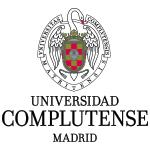Description of an erm(B)-carrying Campylobacter coli isolate in Europe
Investigación publicada en The Journal of Antimicrobial Chemotherapy
1 de marzo de 2016
Florez-Cuadrado D., Ugarte-Ruiz M., Quesada A., Palomo G., Dominguez L. y Porrero MC.
 | Servicio de Zoonosis de Transmisión Alimentaria y Resistencia a Antimicrobianos (ZTA). Centro de Vigilancia Sanitaria Veterinaria (VISAVET). Universidad Complutense (UCM). |
| Departamento de Bioquímica, Biología Molecular y Genética. Facultad de Veterinaria. Universidad de Extremadura (UNEX). | |
